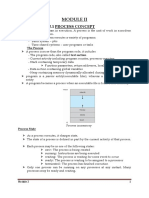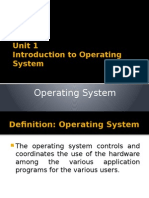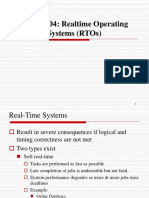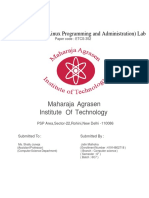0% found this document useful (0 votes)
11 views69 pagesOPERATING SYSTEMS Lecture Slides
The document provides an overview of process management in operating systems, detailing the definition of processes, their states, and the role of process control blocks. It discusses multithreading, process scheduling, interprocess communication, and memory management techniques, including allocation strategies and fragmentation issues. Additionally, it covers CPU scheduling algorithms and their criteria for optimizing performance in multitasking environments.
Uploaded by
deltasystems83Copyright
© © All Rights Reserved
We take content rights seriously. If you suspect this is your content, claim it here.
Available Formats
Download as PDF, TXT or read online on Scribd
0% found this document useful (0 votes)
11 views69 pagesOPERATING SYSTEMS Lecture Slides
The document provides an overview of process management in operating systems, detailing the definition of processes, their states, and the role of process control blocks. It discusses multithreading, process scheduling, interprocess communication, and memory management techniques, including allocation strategies and fragmentation issues. Additionally, it covers CPU scheduling algorithms and their criteria for optimizing performance in multitasking environments.
Uploaded by
deltasystems83Copyright
© © All Rights Reserved
We take content rights seriously. If you suspect this is your content, claim it here.
Available Formats
Download as PDF, TXT or read online on Scribd
/ 69






















































































